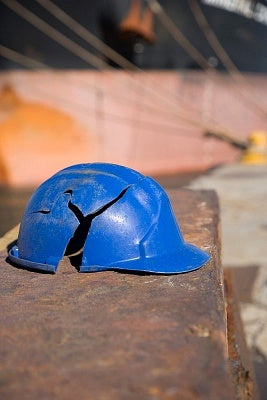In the realm of workplace safety, your gear is your guardian. From helmets and harnesses to gloves and goggles, each piece of safety equipment plays a pivotal role in protecting workers from potential hazards. However, like all guardians, these protectors have their limits. Understanding the lifespan of your safety equipment is crucial for ensuring it can continue to offer the protection it was designed for. Let's delve into the signs of wear and tear and establish guidelines for knowing when it's time to retire and replace your trusted safety gear.

The Lifespan of Safety Equipment
The lifespan of safety equipment varies significantly depending on the type of gear, the frequency of use, and the conditions under which it's used. For instance, a safety helmet exposed to daily sunlight and physical impacts will degrade faster than one used occasionally in a warehouse. Despite these variations, all safety equipment has a recommended service life — often provided by the manufacturer — that serves as a guideline for replacement.
Signs It's Time for a Replacement
-
Visible Damage: Cracks, dents, fraying, or other signs of physical damage are clear indicators that equipment needs replacing. Such damage can compromise the integrity and effectiveness of the gear.
-
Wear and Tear: General wear and tear from regular use — such as thinning materials, faded colors, or stretched straps — can reduce the protective qualities of safety equipment.
-
Outdated Technology: Advances in safety technology mean newer products offer better protection. If your gear is several years old, it might be time for an upgrade even if it looks in good condition.
-
After a Significant Impact or Accident: Always replace safety equipment after it has been involved in a significant impact or accident, even if no damage is visible. The internal structure could be compromised.

Maintenance and Care Tips
To extend the lifespan of your safety equipment:
- Follow the manufacturer's guidelines for care and maintenance.
- Store equipment properly, away from direct sunlight and in a dry, cool place.
- Regularly inspect your gear for signs of wear or damage.
- Clean your equipment according to the manufacturer's instructions to prevent degradation from chemicals or pollutants.
Conclusion
Safety equipment is an investment in your well-being on the job. Recognizing when it's time to replace worn or outdated gear is crucial for maintaining a safe working environment. Adhering to manufacturer guidelines, conducting regular inspections, and being vigilant about the condition of your safety equipment are all essential practices. Remember, the cost of replacing a piece of safety equipment is always lower than the cost of an injury sustained because of inadequate protection.
FAQs
How often should I replace my safety helmet? Generally, safety helmets should be replaced every 3-5 years, but always consult the manufacturer's guidelines and replace them immediately if they sustain an impact.
Can I extend the life of my safety gear? Proper maintenance and care can extend the life of your safety gear, but never compromise on safety for the sake of longevity.
Is it okay to buy used safety equipment? While buying used can save money, it's challenging to verify the history and condition of used safety equipment. For critical safety items, purchasing new is recommended to ensure maximum protection.



Leave a Reply